Yugoslav Partisans
The Partisans were organized on the initiative of Tito following the Axis invasion of Yugoslavia in April 1941, and began an active guerrilla campaign against occupying forces after Germany invaded the Soviet Union in June.By late 1943, the Allies had shifted their support from Mihailović to Tito as the extent of Chetnik collaboration became evident, and the Partisans received official recognition at the Tehran Conference.[27] After the German retreat forced by the Soviet-Bulgarian offensive in Serbia, North Macedonia, and Kosovo in the autumn of 1944, the conscription of Serbs, Macedonians, and Kosovar Albanians increased significantly.Between January 1942 and November 1942, the movement's full official name was briefly National Liberation Partisan and Volunteer Army of Yugoslavia (Narodnooslobodilačka partizanska i dobrovoljačka vojska Jugoslavije, NOP i DVJ).In November 1942, the movement was renamed into the National Liberation Army and Partisan Detachments of Yugoslavia (Narodnooslobodilačka vojska i partizanski odredi Jugoslavije, NOV i POJ), a name which it held until the end of the war.Germany occupied the northern part of Drava Banovina (roughly modern-day Slovenia),[30] while maintaining direct military occupation of a rump Serbian territory with a puppet government.[33] The dissolution of Yugoslavia, the creation of the NDH, Italian governorate of Montenegro and Nedic's Serbia and the annexations of Yugoslav territory by the various Axis countries were incompatible with international law in force at that time.The government of the puppet Independent State of Croatia found itself unable to control its territory in the early stages of the occupation, resulting in a severe crackdown by the Ustaše militias and the German army.[citation needed] Amid the relative chaos that ensued, the Communist Party of Yugoslavia moved to organize and unite anti-fascist factions and political forces into a nationwide uprising.[49][50] Resistance to communist leadership of the anti-Ustasha rebellion among the Serbs from Bosnia also developed in the form of the Chetnik movement and autonomous bands which were under command of Dragoljub Mihailović.At the September 1941 Stolice conference, the unified name partisans and the red star as an identification symbol were adopted for all fighters led by the Communist Party of Yugoslavia.[58]The Partisans staged a guerrilla campaign which enjoyed gradually increased levels of success and support of the general populace, and succeeded in controlling large chunks of Yugoslav territory.These were managed via the "People's committees", organized to act as civilian governments in areas of the country controlled by the communists, even limited arms industries were set up.This had been shown by the sequel to each of the previous five offensives from which, one after another, the partisan brigades and divisions had emerged stronger in experience and armament than they had been before, with the backing of a population which had come to see no alternative to resistance but death, imprisonment, or starvation.So clear was this that no room was left for provincialism; Serbs and Croats and Slovenes, Macedonians, Bosnians, Christian and Moslem, Orthodox and Catholic, sank their differences in the sheer desperation of striving to remain alive.In September 1943, at Churchill's request, Brigadier General Fitzroy Maclean was parachuted to Tito's headquarters near Drvar to serve as a permanent, formal liaison to the Partisans.During a meeting with Franklin D. Roosevelt and the Combined Chiefs of Staff of 24 November 1943, Winston Churchill pointed out that:It was a lamentable fact that virtually no supplies had been conveyed by sea to the 222,000 followers of Tito. ...[71] With Allied air support (Operation Flotsam) and assistance from the Red Army, in the second half of 1944 the Partisans turned their attention to Serbia, which had seen relatively little fighting since the fall of the Republic of Užice in 1941.[citation needed] In 1945, the Partisans, numbering over 800,000 strong[28] defeated the Armed Forces of the Independent State of Croatia and the Wehrmacht, achieving a hard-fought breakthrough in the Syrmian front in late winter, taking Sarajevo in early April, and the rest of the NDH and Slovenia through mid-May.[83][84] Following the Soviet-Bulgarian offensive in Serbia and North Macedonia in the autumn of 1944, mass Partisan conscription of Serbs, Macedonians and eventually Kosovo Albanians increased.The communist-dominated Partisan organization under the leadership of Josef Tito was a multi-ethnic resistance force – including Serbs, Croats, Montenegrins, Bosniaks, Jews, and Slovenes.[81] According to historians Tvrtko Jakovina and Davor Marijan the main reason for massive participation of Croats in Battle of the Sutjeska in June 1943 was ongoing terror of Italian fascists.On Croatian territory after 30 November 1944 in combat with the enemy participated 5 corps, 15 divisions, 54 brigades and 35 Partisan detachments, a total of 121,341 soldiers (117,112 men and 4239 woman) which at the end of 1944 made up about third of the entire armed forces of the National Liberation Army.Only Greece shared its experience of being trisected; however, Slovenia was the only country that experienced a further step – absorption and annexation into neighboring Nazi Germany, Fascist Italy, and Hungary.The Partisan movement in Slovenia functioned as the military arm of the Liberation Front of the Slovene Nation, an Anti-Fascist resistance platform established in the Province of Ljubljana on 26 April 1941, which originally consisted of multiple groups of left wing orientation, most notable being Communist Party and Christian Socialists.A post of the Allied mission in northern Slovenia had found that at Ožbalt, just on the Austrian side of the border, about 50 km (31 mi) from Maribor, there was a poorly guarded working camp from which a raid by Slovene Partisans could free all the prisoners.[133] A number of Partisan units, and the local population in some areas, engaged in mass murder in the immediate postwar period against POWs and other perceived Axis sympathizers, collaborators, and/or fascists along with their relatives, including children.[136][page needed] The Partisans did not have an official agenda of liquidating their enemies and their cardinal ideal was the "brotherhood and unity" of all Yugoslav nations (the phrase became the motto for the new Yugoslavia).[full citation needed] This chapter of Partisan history was a taboo subject for conversation in the SFR Yugoslavia until the late 1980s, and as a result, decades of official silence created a reaction in the form of numerous data manipulation for nationalist propaganda purposes.[147][148][149][150][151][152] Despite social changes commemorative tributes to the Partisan struggle are still observed throughout the former Yugoslavia, and are attended by veteran associations, descendants, yugo-nostalgics, Titoists, leftists and sympathisers.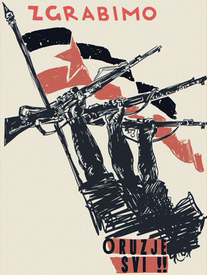

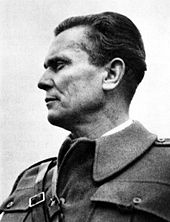

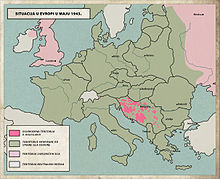


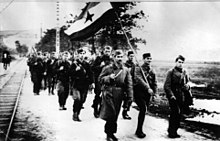
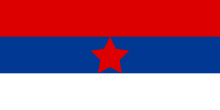



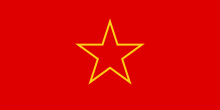

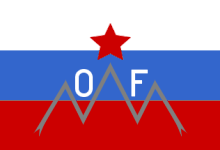

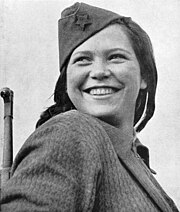
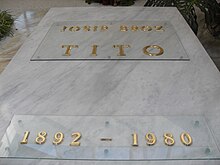
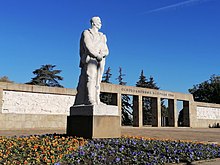
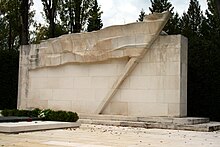
Supreme HeadquartersJosip Broz TitoArso JovanovićVelimir TerzićSreten ŽujovićEdvard KardeljAleksandar RankovićIvo Lola RibarSvetozar VukmanovićMilovan ĐilasIvan MilutinovićPeko DapčevićSava KovačevićVladimir PopovićVlada ZečevićPetar DrapšinRade HamovićFranc LeskošekMihailo ApostolskiMoša PijadeRade KončarGojko NikolišIzidor PapoIvan RukavinaPavle SavićIvan MačekCommunist Party of YugoslaviaYugoslaviaRomaniaIstriaLošinjFriuli-Venezia GiuliaTriesteHungaryOperation Spring AwakeningNagykanizsa–Körmend offensiveGermanyCarinthiaIdeologyAnti-fascismAnti-nationalismCommunismMarxism–LeninismNational liberationPan-SlavismSoviet UnionRepublicanismPolitical positionFar-leftAllies of World War IIBulgariaNational Liberation Movement (Albania)ChetniksYugoslav government-in-exileAxis powersNedić's regimeSerbian Volunteer CorpsSerbian State GuardPećanac ChetniksSlovene Home GuardMontenegroRussian Protective CorpsAlbaniaIndependent State of CroatiaBalli KombëtarSandžak Muslim militiaMontenegrin uprisingSrb uprisingBattle of SerbiaUžice RepublicBihać RepublicBattle of NeretvaBattle of SutjeskaBattle of KozaraRaid on DrvarBattle of BelgradeSyrmian FrontTrieste operationBattle of OdžakYugoslav People's Armycommunistanti-fascistNazi Germanyoccupied YugoslaviaWorld War IIresistance movementguerrilla forceconventional warfarefield armiesdivisionsAxis invasion of YugoslaviaGermany invaded the Soviet Unionlarge-scale uprisingDraža MihailovićRepublic of Užiceseries of offensivesTehran ConferenceRed ArmyBelgradeBelgrade Offensiveregular armed forceFederal People's Republic of YugoslaviaUnitary National Liberation FrontAnti-Fascist Council for the National Liberation of Yugoslaviadeliberative assemblycommunist stateYugoslav monarchyGreater Serbiaethnic cleansingroyalismSerbo-CroatianYugoslavpartisanStjepan FilipovićDeath to fascism, freedom to the peopleValjevoInvasion of YugoslaviaKingdom of YugoslaviainvadedGermanBelgrade was bombedLuftwaffeRoyal Yugoslav ArmyWehrmachtDrava BanovinaSlovenia